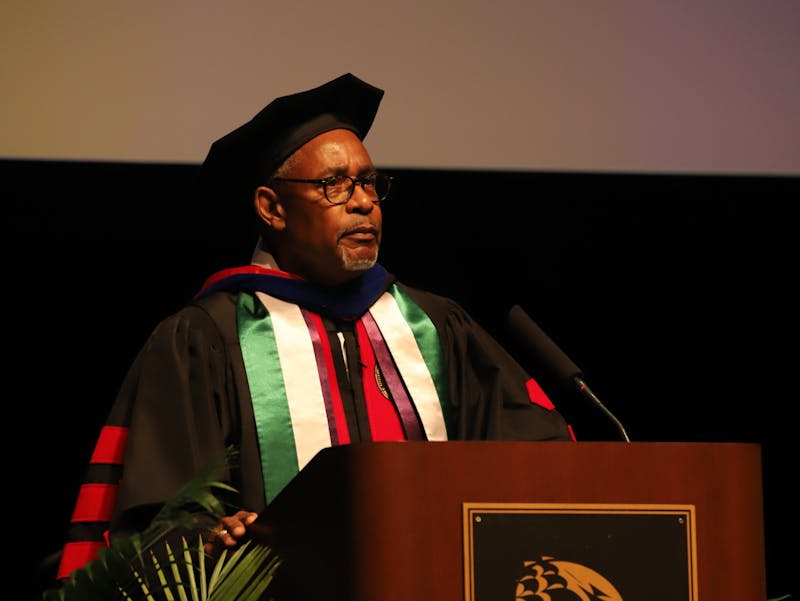To some outside observers, being a journalist seems like a cozy desk job. From how the media depicts the profession, one would assume all the work is done from the comfort of the newsroom, doing everything via email. However, journalists are some of the first ones out on the front line, and they face dangers not only from the stories they cover, but those who do not want them to publish those stories.
A study conducted by The United Nations Educational, Scientific and Cultural Organization (UNESCO) found that between 2016 and 2020, 400 journalists were killed. Compared to the previous year it’s “a nearly 20 percent decrease”. However, this study also found that “nine out of 10 killings remain unresolved.”
UNESCO also looked at the startling rise in journalists being arrested and imprisoned, and this is on top of the threats made to their lives both in-person and online.
These numbers cover the entire scope of the global media sphere. Here at home, however, we have a long and troubled history of undermining journalists. One of the most famous examples is the historic reporting of Bob Woodward and Carl Bernstein. In 1972, The Washington Post was one of several news outlets to report on the break-in at the Democratic National Committee office at the Watergate complex in Washington, D.C. Woodward and Bernstein continued to report on the incident long after the White House downplayed its severity and other newspapers moved on.
The investigation into Watergate eventually exposed the connection between the break-in and President Richard Nixon’s administration. Naturally, the White House denied these claims and attacked the integrity of how these stories were reported. Thankfully though, the story would have a happy ending as more and more reporters would follow the story, and ultimately all guilty parties were identified, including the president. Nixon resigned on Aug. 9, 1974.
However, stories like this do not come around as often as one would think, especially in the modern age in which we live. Since the rise of the 24-hour news cycle and political candidates like Donald Trump, journalism has been under attack. Now, if people do not like news that is being reported, they can just write it off as “fake news.” People are being brainwashed into thinking that the media is the enemy.
No image summarizes what I’ve been talking about more than the image of rioters destroying Associated Press equipment on Jan. 6, 2021, during the riot at the U.S. Capitol.
What is most unfortunate of all is that the national threat toward journalists trickles down to student journalists as well. Whether at the high school or college level, student journalists face just as much scrutiny, if not more.
In researching this topic, a story that resonated with me came out Santa Ana College in California. In September 2022, students of the El Don, the campus’ media outlet, began reporting on a cash for credit program run by the university. In the process of trying to write the article, several campus administrators and faculty told the reporters they could not discuss the matter with them, or they were deferred to other individuals. A response was not given until two weeks later.
El Don went on to report on the experience and explained that this is just one of many instances of their university sending student journalists on “a wild goose chase” just to get their homework done. Universities with similar policies and mindsets impede not only the educational development of journalism students, but also block information from the student body as a whole.
Deadlines are everything to a journalist. The news that is being reported is information students need to know in a timely manner. Preventing that information from being given to students in a timely manner is not only counterproductive but dangerous as well. Not only that, but not allowing your staff and faculty to speak with student journalists in any capacity without approval impedes on their First Amendment rights as well.
Chances are if you are reading this, you are in the Shippensburg area, and you probably think this could never happen here. Unfortunately, Shippensburg University has its own history of silencing student journalism.
In May 2019, the editorial staff of this very newspaper wrote an open letter to then President Laurie Carter. The letter mentioned multiple instances of President Carter degrading the paper and treating it as a detriment to the image of Shippensburg. The Slate staff at the time put it best, “some stories are not positive, and it is in these times that it is perhaps even more vital that we fulfill our duty of reporting those stories and the truth to the best of our abilities.” They go on to say, “To ignore the bad and the ugly — to “talk about the negative in positive ways” as you note we should — is to ignore the harsh realities of life.”


The Slate welcomes thoughtful discussion on all of our stories, but please keep comments civil and on-topic. Read our full guidelines here.